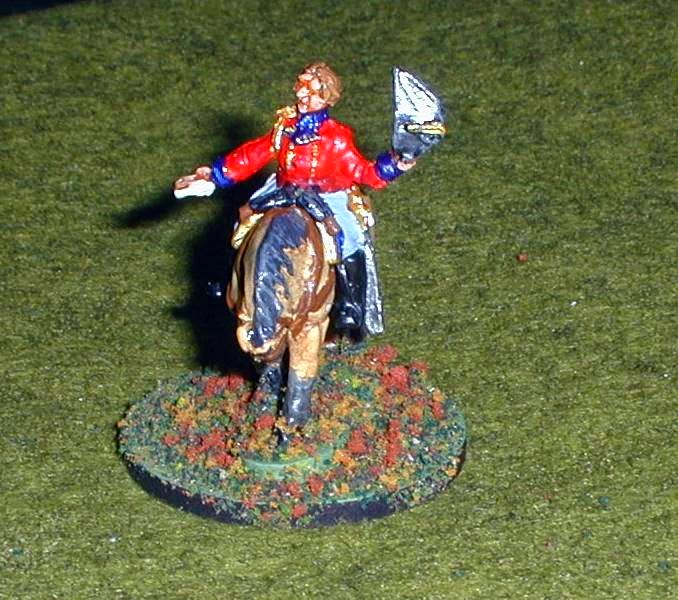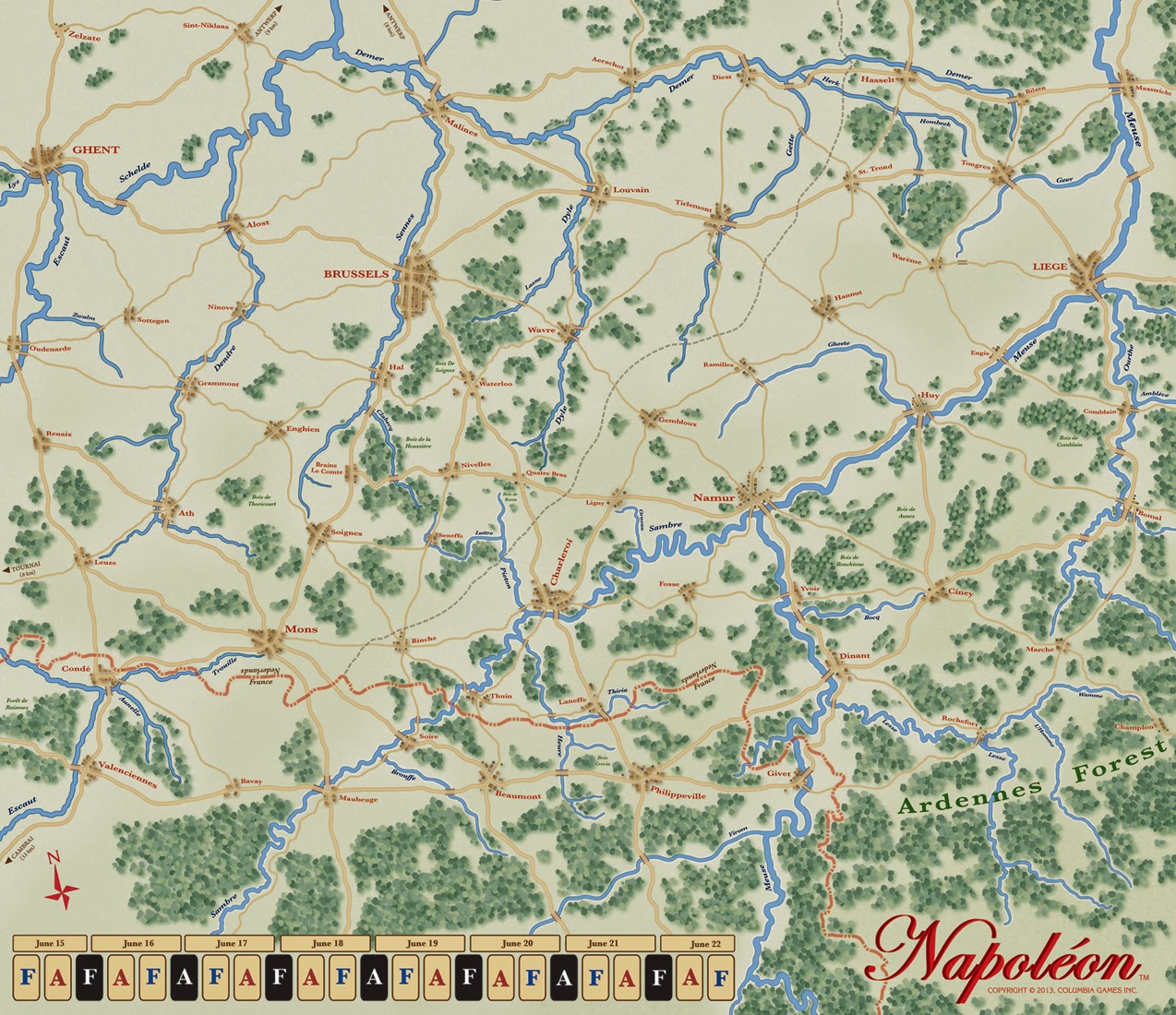I have had almost 2-0 British high command figures on my painting desk for over 6 months; they have been getting a little attention here and there as I had the time, and I took advantage of some recent New England "snow days" to finally finish them!
This is a group of seven 28mm command figures from Old Glory; their British General;s set plus one of the officers from their RHA set, who will serve as a British Artillery commander if needed.
Here's the first one - "are those Prussian or French I see coming?"
He is wearing a pretty standard British generals's uniform with white pants.
Some of the dark red shading on the jacket doesn't show up too well here. I might consider black lining the crimson sash - the universal mark of a British army officer.
Our next chap doffs his chapeau...
The gold cords on the right shoulder became a mark of a British General in the later part of the Napoleonic Wars.
Here's the lone Cavalry general of the set.
His dress is clearly inspired by that worn by Uxbridge at Waterloo.
- right down to the leopard skin saddle blanket!
"Orders?! My Lord Soggybottom should presume to send ME Orders? Harrumph!"
The dark blue saddle blanket with gold trim was standard issue for higher officers, apparently without any royal monograms or similar frippery!
The General's horses were painted en masse about 6 months ago, using staining and washing techniques.
The standard British officer's coat was bright red with dark blue cuffs, collars, and lapels, with gold ornamentation.
Turnbacks on the coat were white.
The short plume was UK standard white over red. No gold lace on the bicorn, though!
Classic "General with telescope" pose for this fellow - I should add a spot of light blue to the end of the scope for the lens!
He again wears the regulation uniform for a British General.
"I say, Smithers, is that the Gin wagon approaching?"
This RHA officer was a spare from the Old Glory 20 figure RHA bag; I saved him for use as a Commander
The pelisse was worn by some RHA officers with a higher fashion sense!
Quite a dapper looking officer, especially for the Artillery!
The second part of this series will be some Foundy command figures form their last big sale a year or so ago!


















































